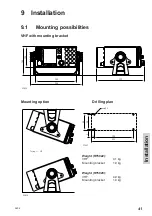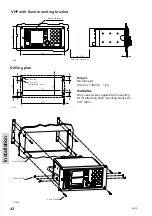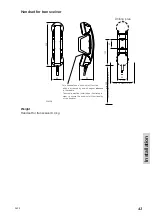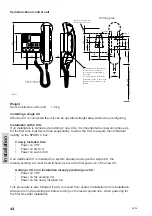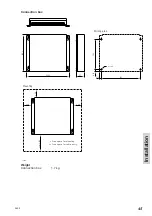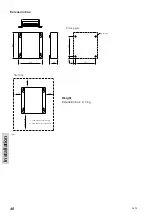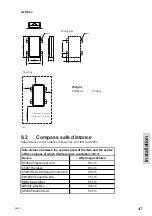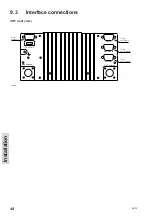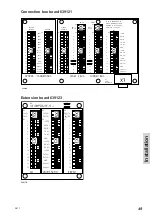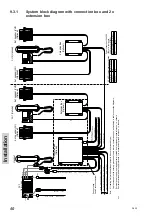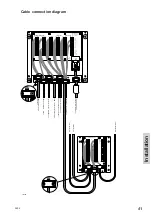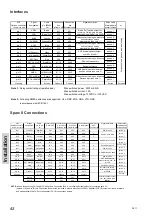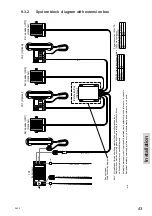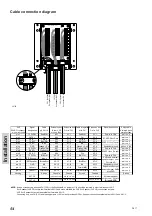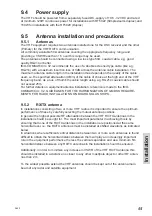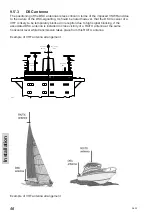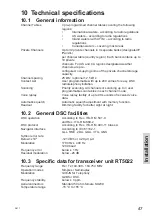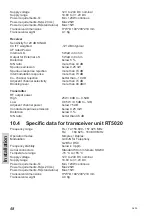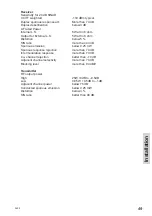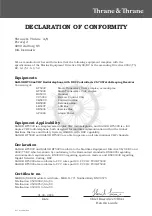
55
Installation
0622
9.4
Power supply
The VHF should be powered from a separately fused DC-supply of 10.8 - 32VDC and rated
at minimum 120W continuous power for installations with RT5022 (Simplex/semi-duplex),and
150W for installations with the RT5020 (Duplex)
9.5
Antenna installation and precautions
9.5.1
Antennas
The VHF equipment requires two antennas installed one for the DSC receiver and the other
(Primary) for the VHF RX/TX communication.
All commonly available 50
Ω
antennas covering the appropriate frequency range and
providing a VSWR less than 1.5 over this range may be used.
The antennas should be connected using a low loss type 50
Ω
coaxial cable, e.g. good
quality RG214 or better.
IMO-COMSAR/Circ. 32 recommends the use of a double screened type cable (like e.g.
RG214) with a maximum insertion loss of 3dB across the antenna cable installation. The
maximum antenna cable length in the installation thus depends on the quality of the cable
used, i.e. the specified attenuation (dB/m) of the cable of choise at the high end of the VHF
frequency band. As a rule of thumb the cable length using e.g. RG214 coaxial cable should
not exceed 25m.
For further details on equipment/antenna installation, reference is made to the IMO-
COMSAR/Circ. 32, GUIDELINES FOR THE HARMONIZATION OF GMDSS REQUIRE-
MENTS FOR RADIO INSTALLATIONS ON BOARD SOLAS SHIPS.
9.5.2
RX/TX antenna
In installations consisting of two or more VHF radios it is important to ensure the optimum
performance of these by carefully selecting the mutual antenna positions.
In general the highest possible RF attenuation between the VHF RX/TX antennas in the
installation should be sought for. The most important parameter in achieving this is by
ensuring that none of the RX/TX antennas in the installation are positioned at the same
horizontal level, i.e. the RX/TX antennas must be installed at shifted elevations as indicated
below.
In situations where sufficient vertical distance between two or more such antennas is found
difficult to obtain the horizontal distance between them will play an increasingly important
role in the equipment performance the less the vertical separation and as a minimum 5m
horizontal distance between any RX/TX antennas in the installation should be ensured.
Additionally, in order to minimize any increase in VSWR of the VHF RX/TX antenna this
should be installed in a distance no closer to any other mast/pole object or other RF anten-
nas than 2 m.
To the widest possible extend the VHF antennas should be kept out of the antenna main
beam of any radar and satellite equipment.
Содержание RT5020 VHF DSC Duplex
Страница 1: ...SAILOR RT5022 VHF DSC SAILOR RT5020 VHF DSC Duplex OPERATION MANUAL ...
Страница 2: ......
Страница 67: ......
Страница 68: ...Thrane Thrane A S info thrane com www thrane com ...

